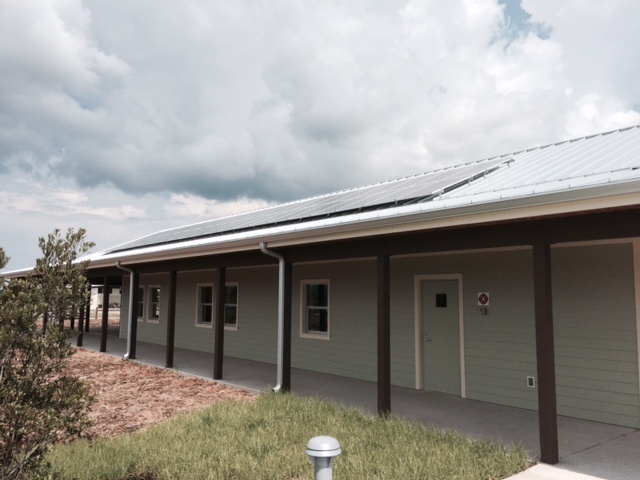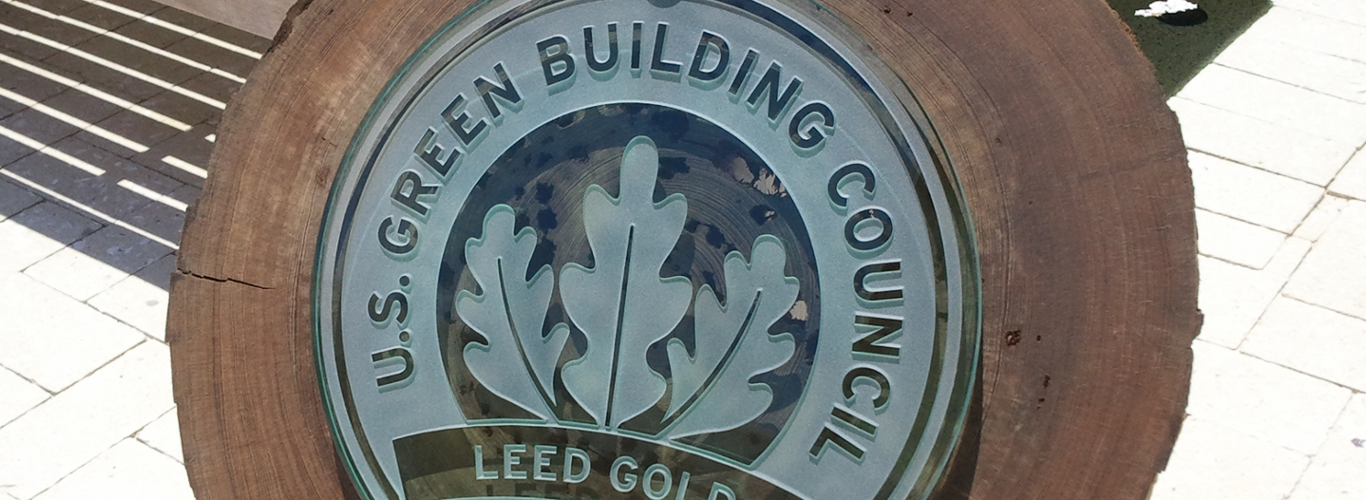
What are some systems for solar power generation that I should consider?
People come to our firm for green design because it's a very personal mission of ours to contribute to the sustainability of our planet and the preservation of our species. We also design beautiful buildings, if I do say so myself...
So, it's not all that uncommon to get questions about how to include solar power, our abundant and clean resource, in the overall design.
First some basics:
Solar panels (aka Photovoltaic Panels, aka PV) make electricity from the sun. They produce DC power, like batteries, which can be used directly to charge your electric car, stored in a large battery system, or be converted to AC power and used directly in your home or business.
The cost of PV has been dropping steadily for the past decade. Our first PV install was in 2003, and the cost was round 11 cents per watt. Now PV is running around 3.5 cents per watt, and even less for larger installations
Here are some other useful facts that will help you narrow in on the right system for you.
1. Battery vs AC vs Net Metering
Battery storage is not required, and although battery storage systems are getting better, technology still needs improvement. You may have heard of the Powerwall, by Tesla. It is a rechargeable lithium-ion battery product for home or small commercial use. It stores electricity for consumption, load shifting, and backup power.
Converting the DC power to AC and using the power directly is still the best option. Net metering is also very helpful, but eligibility varies greatly depending on the location of the property. Ideally, net metering is provided by your local power company and allows you to sell the power you make back into the grid at the same price that you pay to buy power from the power company.
Be aware- Sometimes the utility company sells electricity at one rate but buys is back at lower rate. Since many power companies are monopolies, and exist for the benefit of their shareholders, not their customers, you need to check with your local utility to determine if they have a net metering option, and exactly what the details are. A good net metering program allows you to use the utility grid as your "battery" to store the excess power you make on site.
If you have true net metering (1:1 buy/sell pricing) putting PV on your home or business makes great sense. If you do not have access to net metering, you want to size your PV system so it makes some or most of power that you need, but does not typically make more power than you would normally use.
Net metering gives you a better opportunity to achieve net zero energy if that is your goal. You can size your PV system to make more power than you need at some times of the day or year, so you have excess power "stored" in the grid to use when you cannot make all the power that you need, such as in the hottest part of the summer in Florida when your electrical loads are the highest.
2.New construction
For new construction, considering the price of PV and the rising cost of electricity, the best thing to do is include your PV in your construction budget and install it when the building is constructed. It is a great investment with a strong return.
Can't afford it today, but want to stack the deck in your favor?
The next best thing is to set up your new building to be solar ready. This means positioning the building so it can gather the sun when PV panels are installed in the future. Provide South facing, sloping roofs that are set up for panels to be installed later. A standing seam metal roof is best for mounting, but other roofs can be accommodated.
If your building design wants to have a flat roof, be sure there are no other structures on the building that could prevent the sun from shining directly on the roof, such as stair tower, tall parapet walls, etc. Of course your roofs will be light in color to reflect the heat of the sun, but that topic was covered in an earlier blog (Green roofing system selection by Carlson Studio Architecture). Typically, proper "solar ready" orientation will tend to create a building that has it long sides facing North and south, with it short sides facing east and west.
Roofs oriented within 15 degrees of due south are recommend in the LEED for Homes criteria. The Birch Haven residence designed by Carlson Studio in southwestern lower Michigan is a good example of setting the home up properly for solar panels. The site boundaries were oriented 35 degrees west of due south.
This was less than optimum, so we created a design that allowed the main roof of the home to be facing only 15 degrees west of due south, while the interior of the home was still aligned with the site boundaries to take full advantage of the build-able area of the site and the views. And, we included the PV panels into the construction budget, so a 7KW PV system is about to be installed on the roof as the project is nearing completion.
And if you're thinking about the long-term value of your investment, you should know that buildings that are"solar ready" are going to be worth more than those that are not, as noted by this study by the Office of Energy Efficiency and Renewable Energy (EERE) and personalized to your situation with this PV home value calculator by SolarSimplified.org.
3. Existing Buildings
For existing buildings, everything discussed above still applies, but you may have been dealt a less than ideal situation based on your building's orientation. Hopefully you did not just buy a home or office building with no way to retrofit solar panels onto it.
Get together with your experienced sustainable architect (Carlson) and have them evaluate the possibilities for your existing building. The panels are lightweight, so most existing structures can support them, and wiring from the roof to the electrical room is just being able to get the conduit runs to work through the existing building.
CONCLUSION:
PV panels can last 25 years of longer. The initial payback ROI can be as short as 5-10 years, depending on your net metering options, and the cost of your electricity. There is still a 30% Federal tax credit available too. And the cost of energy is rising.
Of course, our planet is also wasting away with the excessive usage of fossil fuels and other non-renewable sources. Now is the time to get PV on your home or office building, or at the very least, set yourself up to succeed and save money in the near future by being prepared to add PV at any time.
Interested in learning more? Set up a free green architectural design consultation with Carlson Studio Architecture today!


